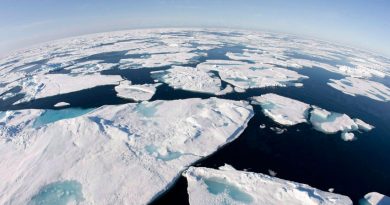Kwanlin Dün First Nation reacts to UN report on climate funding

‘They say, First Nations are going to help lead us … But do they put that into their practice?’
The chief of the Kwanlin Dün First Nation in Yukon says he’s not surprised by the findings in a recent report from the United Nations. The UN’s Special Rapporteur on the rights of Indigenous Peoples found that First Nations are often missing out on funding for green initiatives.
After meeting with Indigenous leaders in Canada earlier this year, Special Rapporteur José Francisco Calí Tzay presented his first report to a delegation in Geneva in late September.
Tzay found that not only are Indigenous governments not being treated as equal stakeholders in the climate crisis, they are being excluded from the majority of green financing initiatives.
“Funding does not effectively reach Indigenous Peoples and their projects,” Tzay said.
That rings true for Kwanlin Dün Chief Sean Smith. He believes the current level of funding for land guardian programs doesn’t indicate genuine investment in co-leadership and co-management.
“They say, First Nations are going to help lead us, First Nations are going to help us deal with the impacts of climate change,” Smith said. “But do they put that into their practice?”
The Canadian government pledged a cumulative $572 million toward Indigenous-led conservation initiatives between 2016 and 2021.
While that funding was welcomed as a historic step, it was still less than one per cent of the government’s total funding for green financing over the same period.
Since 2016, Canada has committed more than $100 billion toward clean growth and climate action.
Barriers to funding
Tzay’s report also found issues in funding delivery between governments and Indigenous-led programming.
“Obstacles to financing must be understood in the context of the underlying structural racism and colonialism that continue to affect Indigenous Peoples,” he wrote.
Current barriers include a focus on short-term projects with tight deadlines, and the fact that Indigenous worldviews and realities are rarely accommodated.
Brandy Mayes, who works as Kwanlin Dün’s heritage, lands and resources operations manager, has experienced some of those obstacles through her own practice.
“You almost need a project manager just to manage all the funding requirements and reporting,” she said.
Mayes leads the First Nation’s stewardship program, which uses traditional knowledge and science to monitor and care for plants and animals.

She agreed with Tzay’s assessment that funding rollout doesn’t always align with the First Nation’s monitoring goals and timelines.
“There’s very narrow parameters for the Guardian program,” she said. “When it comes to working on the land and incorporating Indigenous knowledge into the program, there’s a lot more to it than just ticking a couple boxes.”
Mayes said it can be difficult to justify funding for a holistic land management approach which doesn’t narrowly focus on one species or one particular research question.
“It’s just caribou monitoring. That’s it. Not wolf monitoring, not the other ungulates. It’s very, very centred around what they want from you,” she said.
Instead, the First Nation works to source funding from other avenues to ensure important projects get completed.
According to Tzay, funding should be “channelled in ways that are relevant and appropriate for Indigenous Peoples.”
“Flexible, long-term, gender-inclusive, timely and accessible, and [ensuring] accountability,” he wrote.
Tzay also noted that capacity support and legal, financial and technical consulting may help grants to go further. For remote communities, these resources may otherwise be difficult to access.
For Kwanlin Dün, the research the land stewards produce is used by the City of Whitehorse, the Yukon Government, non-profit organizations and companies such as ATCO Electric Yukon.
Ethical green financing
In his address to the UN human rights council, Tzay said a lack of recognition of Indigenous leadership on climate issues isn’t just a human rights issue – it’s a loss for the planet.
“The most biodiverse and best preserved lands are those that have been stewarded by Indigenous peoples,” he said. “Indigenous peoples’ scientific knowledge is critical to solving the climate crisis.”

In his report, he wrote that Indigenous sovereignty is closely tied to the effectiveness of climate change mitigation strategies.
“Securing [Indigenous] collective land rights and self-determination over their territories is instrumental for the conservation of biodiversity and climate change adaptation.”
There are positive signs that Guardian programming will continue to expand in Canada. In December 2022, Prime Minister Justin Trudeau announced $800 million over seven years to support Indigenous-led conservation projects.
But a report released by Climate Action Network Canada in February suggested that $25 billion would be a more appropriate figure, given the gravity of the climate crisis and the importance of effectively including Indigenous leaders at decision-making tables as rights-holders.
Surveying settlement lands, establishing special management areas, fish and wildlife monitoring, and engaging in forest management planning is part of Kwanlin Dün’s land claim agreement — a responsibility the First Nation takes seriously.
Chief Smith said moving beyond political rhetoric to actions that express confidence in Indigenous leadership is part of reconciliation.
“You bring people into these programs and the land heals,” agreed Mayes.
“You know, we’ve had a lot of hurt, a lot of social impacts that have happened to our people. But you bring them into these programs and they realize they have a lot of skills.
“When people who were born on the land look after it, we can all prepare for what’s coming.”
Related stories from around the North:
Canada: Ice surviving Arctic summer hits low, implications for traditional harvesting, shipping, CBC News
Greenland: Arctic ice melt could put 1.5 million UK properties at flooding risk: report, Eye on the Arctic
Norway: Polar heat record. July average above 10°C, The Independent Barents Observer
Sweden: High risk of wildfires in many parts of Sweden, including North, Radio Sweden
United States: Bursting ice dam in Alaska highlights risks of glacial flooding around the globe, The Associated Press



